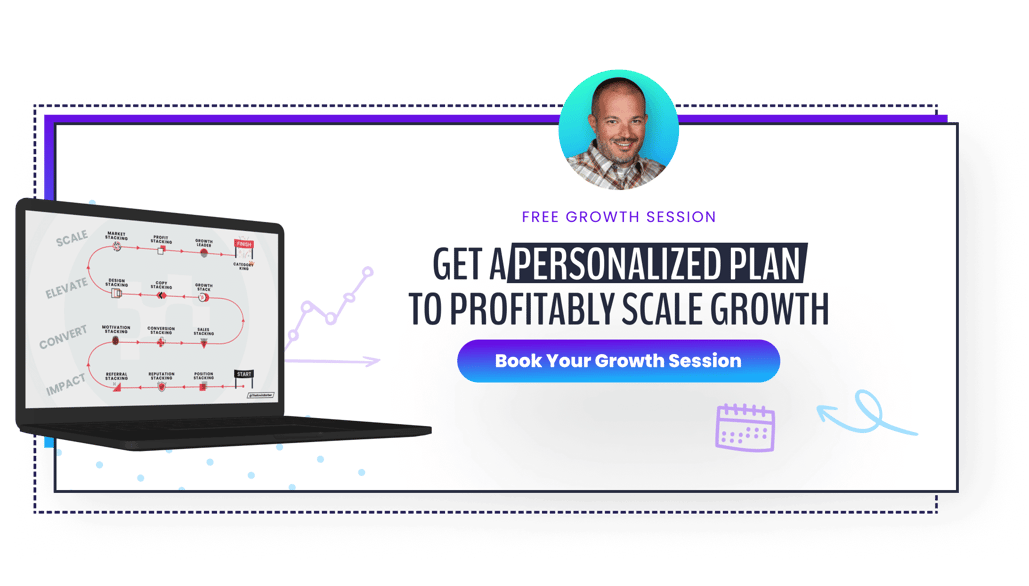-
Common Challenges In SEO Lead Generation
-
1. Keyword Research: Lay the Foundation
-
2. UX Optimization: Create a User-Friendly Experience
-
3. Crafting High-Quality Content: Engage Your Audience
-
4. Building Links: Strengthen Your Online Presence
-
5. Measuring Your Efforts: Track SEO Performance
-
6. Staying Ahead: Update and Optimize Your SEO Strategy
-
SEO Lead Generation: Implement These Tips for Growth

7 Easy SEO Lead Generation Tips to Boost Your Business Growth
“Leads, leads, leads! Give me all the leads!”
You might find yourself shouting these words when you’re trying to grow a business–especially in the tech and software industries. Leads are the lifeblood of your business. And you’re not alone in thinking this.
Hubspot reports that 34% of marketers say lead generation is their top priority – by far the most common answer. But how do you attract the right leads to your website, content, or media channels?
SEO lead generation is a great place to start.
In this article, we’ll break down whatSearch Engine Optimization (SEO) lead generation is, the common challenges of crafting your strategy, and seven tips to make SEO lead generation easy so you can draw more organic traffic to your site and grow your business.
Understanding SEO Lead Generation
As a CMO or business owner, you have a real challenge: optimizing SEO to bring in qualified leads. Finding relevant keywords and creating SEO content that matches search intent, crafting campaigns, and staying up-to-date with ever-changing search engine algorithms can be tough to manage.
SEO lead generation combines (SEO) with lead generation to drive business growth. SEO lead generation aims to improve a website's SERP visibility for specific keywords or phrases to generate more high-quality leads (prospective customers). Businesses can rank higher in SERPs and generate more leads by optimizing a website's content, structure, and user experience.
Common Challenges In SEO Lead Generation
Knowing the common challenges in SEO lead generation helps you prepare for potential obstacles and create effective strategies to overcome them, which increases the chances of success in generating leads through SEO.
Let’s dive into a few of the most common ones:
Identifying the right keywords: Choosing relevant and high-converting keywords that your target audience is searching for is crucial for successful SEO lead generation. But how do you know which ones to choose?
Beating the competition and market saturation: Many businesses compete for the same keywords, making ranking higher in search engine results difficult. You don’t want to stuff your articles with too many keywords, but at the same time, you want to rank on search engines. It’s a balancing act.
Solving evolving algorithms: Search engine algorithms frequently change, meaning you must update keywords, and even strategies, often to maintain rankings. Stay on your toes!
Creating high-quality content: Producing engaging, informative, and well-optimized content that appeals to both users and search engines is challenging. How do you create content that’s a masterpiece and a traffic magnet?
Building backlinks: Acquiring high-quality backlinks from authoritative sources requires considerable effort and can be time-consuming.
1. Keyword Research: Lay the Foundation
If you want to create content that drives organic traffic, you’ll need to nail keyword research to make sure you’re focusing on the right things. Think of it as a process. You know the topics you want to write about and what will resonate with your target audience. Now you need to find keywords to help you write killer content and rank on search engines.
Keyword research is like a blueprint. To create a blueprint, you need tools. Many keyword research tools exist, like SEMrush, Ahrefs, and Google Keyword Planner. These tools help you find relevant keywords, check their search volume, and even see how the competition uses them.
Whichever tool you use, start with primary and related keywords, and then try looking for long-tail keywords. Long-tail keywords tend to be more specific, and often present in phrases, so you might find less competition than short-tail keywords.
Because they’re specific, the people searching these phrases are more likely to be potential customers since they have a niche intent. If your content resonates and matches their needs, they’ll be more inclined to take action.
Pro tip: When looking for keywords, ensure you consider user intent. What’s the purpose behind the search query?
- Informational intent: A user has a question or wants to know more about a specific topic. For example: What is SEO Lead Generation?
- Commercial intent: A user knows they want to hire someone or purchase something but needs to do more research. For example: SEO Lead Generation Companies.
- Transactional Intent: A user is ready to purchase. For example: They’re on your website, ready to talk to sales!
- Navigational intent: They want to visit your website or store. For example: SEO Lead Generation in Ohio.
2. UX Optimization: Create a User-Friendly Experience
Once your SEO strategy brings potential customers to your website, how do you keep them there? Firstly, you have a short window to keep their attention, so your headline, subheading, and unique value proposition need to be compelling.
Secondly, a great user experience (UX) is essential. Google and other search engines reward websites that offer a positive experience – if you want to help your search rankings, give the people what they want.
- Speed: Slow-loading web pages might have visitors clicking the back button faster than you can say SEO. You’ll want to optimize images, minimize code, and look for themes built for speed.
- Navigation: Can potential customers navigate your website easily? Think of your website like a freshly paved road. Tell users where to go next. Provide compelling calls to action and take users on a journey. It should feel intuitive.
- Mobile-friendliness: A mobile-friendly website is pretty much a requisite today. More and more people use their smartphones to browse the internet – ensure you optimize your site for mobile navigation.
We know we mentioned calls to action (CTAs) in the last section, but they really are the best way to guide users to take the action you want them to take. A lead magnet that gives users a quick win will create a qualified lead – but only if users know exactly how to get access. CTAs should be concise, stand out, and entice users to take the next step.
3. Crafting High-Quality Content: Engage Your Audience
Organic, SEO-friendly, and relevant content is the star of the show. Think of high-quality content as the lifeblood of your SEO strategy because it plays a critical role in driving your organic traffic and improving search engine ranking.
We like to think of content in clusters. Arrange three to five highly relevant topics you want to cover and start creating content around these clusters. This is especially helpful for SEO lead generation because spreading your content efforts across relevant keywords gives you a general direction and helps build a strategy.
Related: [ULTIMATE GUIDE] Lead Generation Through Content Marketing
When you can meet customers where they are in the buyer journey, you’re more likely to capture qualified leads.
- In the awareness phase, potential customers seek remedies for their symptoms. Empathize with their problems and provide content such as blog posts, infographics, and videos that help users understand their symptoms. It’s a good idea to offer free resources here in exchange for contact details.
- In the consideration phase, potential customers are looking for solutions. They know their problem and want to know how your product can meet their needs. Case studies, testimonials, and webinars are a good play here.
- In the decision phase, your audience evaluates you against your competitors and might be ready to talk to sales. Offer free trials, demos, or consultations so potential customers can experience what it’s like working with you.
- In the retention phase, you can offer best practices, helpful tips, and tutorials to help customers make the most of your products and services.
Creating content that meets people where they are makes sense because you can attract the right audience, build trust and credibility, and guide leads through each stage of the buyer journey. Each piece of content should help increase conversions since you know exactly who you’re trying to target, and where.
Pro tip: Don’t “stuff” your content full of keywords because you think it will help you rank. Google is too clever for that! Weave keywords naturally into your content, striking a balance between optimizing for search engines and engaging your audience.
4. Building Links: Strengthen Your Online Presence
Why are backlinks important? Think of them like an SEO currency. They show search engines that your content is relevant, valuable, and credible – so much so that other websites share it with their audience.
Quality backlinks from authoritative sources can boost your site's rankings, making it more visible to potential leads. Plus, they drive referral traffic to your site, increasing the chances of converting those visitors into customers.
To earn high-quality backlinks, consider the following:
- Become a resource by creating well-researched content that others in your industry can reference and link back to.
- Offer to write content for other websites in your niche. You get eyes on your content and can also link back to your own website.
- Share your content on social media – you increase its visibility, and others might share the links.
Lastly, don’t forget about internal linking! Internal links help to guide visitors through your content and website. For example, if you’re writing about SEO, do you have other posts about SEO? If they’re relevant, link to them – it helps users find additional content that might help solve their problems. They also:
- Give users a hint of what they can expect when they click
- Help you link to pages that guide visitors to taking action (creating potential conversion points)
- Help users and search engines make sense of your site’s architecture
5. Measuring Your Efforts: Track SEO Performance
If you want to make data-driven decisions, you’ve got to follow the data. When you monitor your SEO performance, you can understand what’s working and what isn’t, identify new opportunities in your market, and demonstrate the value and ROI of SEO to stakeholders.
How do you measure your SEO performance? Again, a few tools, like Google Analytics, SEMrush, and Moz, do the job well. Here are some key metrics to keep an eye on that indicate how well your lead generation is working.
- Organic traffic: How many people find your content and website through search engines?
- Keyword rankings: How are your target keywords performing? Where do they rank in search engine results?
- Bounce rates: How many people leave your site after viewing only one page?
- Conversion rates: How many visitors take the actions you want them to?
- Backlinks: Are you losing or gaining backlinks from reputable sites?
SEO lead generation is an ongoing process. People change, the market changes, and so does your product. You’ll continually tweak and optimize your strategy over time. Use data to help!
6. Staying Ahead: Update and Optimize Your SEO Strategy
To stay ahead and ensure search engines like you, you must keep up with SEO best practices, conduct regular audits, and look out for algorithm shifts. For example, just last year, Google introduced its helpful content update – designed to reward websites that have relevant content written for people.
There’s a myriad of tips and tools out there to ensure your SEO efforts bear fruit. Follow industry experts like Neil Patel, attend webinars and workshops to learn from SEO pros, and update your on-page, off-page, and technical SEO tactics to ensure they're up-to-date.
It’s best practice to audit your website regularly. Evaluate the performance of your keywords, assess site speed and navigation, and review your content to ensure it’s helpful, relevant, and optimized. Lastly, check for broken links and other technical issues that affect your site,
SEO Lead Generation: Implement These Tips for Growth
Implementing these tips, even one at a time, will improve your SEO strategy and boost business growth. SEO is often a long game that produces incremental results – stick with it.
At Lean Labs, we know that qualified leads are the lifeblood of your business.
Once you have leads that want to hear from you and are intrigued by what you can do for them, you’re in a good position to drive growth. When you market to the right people, taking them through your buyer journey is easier, and they’re more likely to convert.
What do you do once you have leads in the door? If you want to see how we drive growth for our clients, peek behind the curtain, and steal our most valuable plays, get your free copy of the Growth Playbook here!





